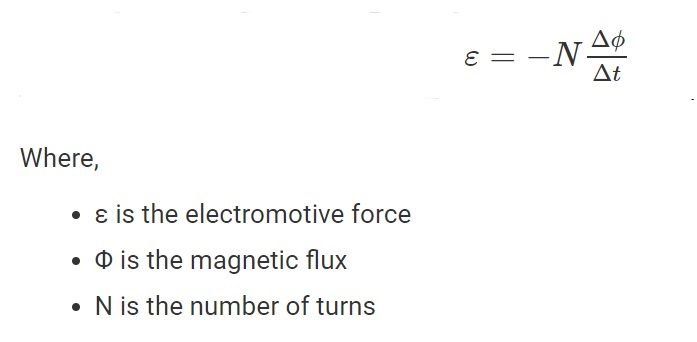Faraday’s law of electromagnetic induction (alluded to as Faraday’s law) is a fundamental law of electromagnetism predicting how a magnetic field will interact with an electric circuit to produce an electromotive force (EMF)? This concept is called electromagnetic induction.
Table of Contents
Faraday’s First Law
Faraday’s First Law states that “Whenever a conductor is placed in a changing magnetic field, an electromotive force (e.m.f.) is induced. If the conductor circuit is closed, a current is induced which is known as induced current.”
Faraday’s Second Law
Faraday’s second law states that “The induced emf in a coil is equal to the rate of change of flux linkage.”
Faraday’s second law can be presented by the formula given below,

Various Formulas of Faraday’s Law
Let’s consider, a magnet is approaching a coil. Here we consider time two instants at T1 and T2.
Flux linkage with the coil at a time,
Flux linkage with the coil at a time,
Change in flux linkage,
Let this change in flux linkage be,
So, the Change in flux linkage can be given by,
Now the rate of change of flux linkage
Taking derivative on the right-hand side we will get
The rate of change of flux linkage will be,

But as per Faraday’s law of electromagnetic induction, the rate of change of flux linkage is equal to induced emf.
Considering Lenz’s Law.

Where:
- Flux Φ in Wb = B.A
- B = magnetic field strength
- A = area of the coil
